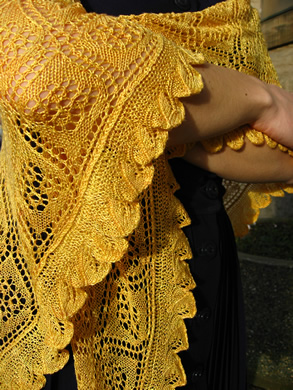Jessie Lambdin
$4.50 or 2 Pages of Your Story
Difficulty: Engaging (click for info)
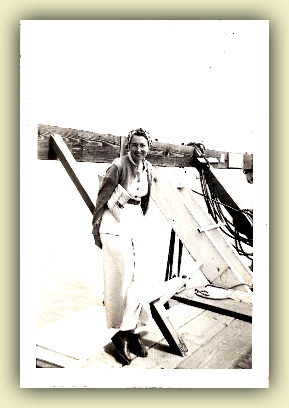 Jessie's people were farmers, denizens of Sterling, Indiana since way back in the 1820's. Silas and Cora Lambdin, Jessie's parents, spent the early part of the twentieth century living in a large household that included their children, Silas' parents Benjamin and Rachel, and two young farmhands, John Dooley and John Mills. Silas and Benjamin farmed together with help from the Johns, and the women collaborated on keeping house. The Lambdin homestead seems to have expanded to encompass whomever needed it; back in 1880, before Cora joined the family, Rachel's mother Mary Tucker was living there with Benjamin, Rachel and their young brood.
Jessie's people were farmers, denizens of Sterling, Indiana since way back in the 1820's. Silas and Cora Lambdin, Jessie's parents, spent the early part of the twentieth century living in a large household that included their children, Silas' parents Benjamin and Rachel, and two young farmhands, John Dooley and John Mills. Silas and Benjamin farmed together with help from the Johns, and the women collaborated on keeping house. The Lambdin homestead seems to have expanded to encompass whomever needed it; back in 1880, before Cora joined the family, Rachel's mother Mary Tucker was living there with Benjamin, Rachel and their young brood.
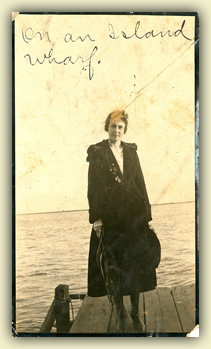 Around 1917 or 1918, Silas' health problems compelled the immediate family to leave Sterling and move to California. Cora, Silas and their eight children settled in Contra Costa County, where Silas became a dry goods merchant. These bare facts suggest a host of more substantial questions. How did the family feel about uprooting from the land that Lambdins had farmed for four generations? Was it exciting or heart-wrenching to make the long trip to the west coast, leaving Benjamin, Rachel and all the familiar surroundings, and start a mercantile life after so many years of farming? Oral history records that the move was made for health reasons; was it made reluctantly, a sacrifice of the heart to save the body? Or was there a spark of adventure in this turn-of-the-century generation of Lambdins, a yearning toward the golden land of possibility that so many Americans imagined in California? Did different Lambdins feel differently about relocating? Silas and Cora would have been in their 40's during the move, whereas their older children were teenagers nearing adulthood. Did the two generations look on the move with different eyes?
Around 1917 or 1918, Silas' health problems compelled the immediate family to leave Sterling and move to California. Cora, Silas and their eight children settled in Contra Costa County, where Silas became a dry goods merchant. These bare facts suggest a host of more substantial questions. How did the family feel about uprooting from the land that Lambdins had farmed for four generations? Was it exciting or heart-wrenching to make the long trip to the west coast, leaving Benjamin, Rachel and all the familiar surroundings, and start a mercantile life after so many years of farming? Oral history records that the move was made for health reasons; was it made reluctantly, a sacrifice of the heart to save the body? Or was there a spark of adventure in this turn-of-the-century generation of Lambdins, a yearning toward the golden land of possibility that so many Americans imagined in California? Did different Lambdins feel differently about relocating? Silas and Cora would have been in their 40's during the move, whereas their older children were teenagers nearing adulthood. Did the two generations look on the move with different eyes?
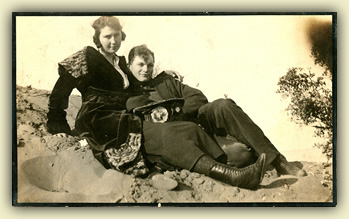 Although I'll never know for sure, I tend to believe there was at least a certain adventurousness in Silas and Cora's daughter Jessie, who in 1920, at 19, was married to my great-grandfather, Charles Victor Morine. The young couple had set up house in Contra Costa, and were contemplating the move to the Hawaiian island of Oahu, where Charles Victor had secured a job with the Del Monte Fruit Company. Sometime between 1922 and 1924, Jessie and Charles Victor shipped to Honolulu with my toddler grandfather, Victor Morine. Another son, Robert, and a daughter, Audrey, were born within the next few years. In 1930 the family was living in Wahiawa, Oahu, in an ethnically diverse neighborhood dominated by Chinese and Japanese families and businesses. Hawaii did not achieve statehood until 1959, and the Oahu of 1930 must have been a radically different cultural experience than the Indiana or even California of the same period. I like to think that my great-grandparents benefited from this diversity, although the adjustment had to be challenging as well.
Although I'll never know for sure, I tend to believe there was at least a certain adventurousness in Silas and Cora's daughter Jessie, who in 1920, at 19, was married to my great-grandfather, Charles Victor Morine. The young couple had set up house in Contra Costa, and were contemplating the move to the Hawaiian island of Oahu, where Charles Victor had secured a job with the Del Monte Fruit Company. Sometime between 1922 and 1924, Jessie and Charles Victor shipped to Honolulu with my toddler grandfather, Victor Morine. Another son, Robert, and a daughter, Audrey, were born within the next few years. In 1930 the family was living in Wahiawa, Oahu, in an ethnically diverse neighborhood dominated by Chinese and Japanese families and businesses. Hawaii did not achieve statehood until 1959, and the Oahu of 1930 must have been a radically different cultural experience than the Indiana or even California of the same period. I like to think that my great-grandparents benefited from this diversity, although the adjustment had to be challenging as well.
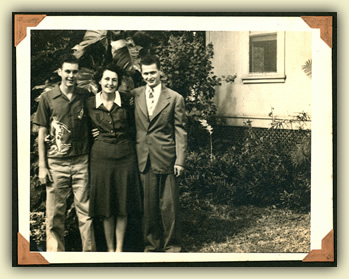 Anecdotal evidence also suggests that Jessie kept strong ties with her roots. Although Charles Victor was a supremely casual man and nobody else in her family had the slightest interest in attending church, Jessie would get dressed up in her Sunday best every week and attend services. Although she was actually a Presbyterian, there weren't any Presbyterian churches on the island at the time, so she usually settled for the Methodist service near her house. On special occasions, she and some friends would get dressed up, make the long drive into Honolulu and attend the First Congregational Church there. Apparently she was so much dressier and more decorous than the other members of her family that some adolescent friends of her son's, seeing her pass in the street attired in her fancy hat and gloves, refused to believe him when he said she was his mother.
Anecdotal evidence also suggests that Jessie kept strong ties with her roots. Although Charles Victor was a supremely casual man and nobody else in her family had the slightest interest in attending church, Jessie would get dressed up in her Sunday best every week and attend services. Although she was actually a Presbyterian, there weren't any Presbyterian churches on the island at the time, so she usually settled for the Methodist service near her house. On special occasions, she and some friends would get dressed up, make the long drive into Honolulu and attend the First Congregational Church there. Apparently she was so much dressier and more decorous than the other members of her family that some adolescent friends of her son's, seeing her pass in the street attired in her fancy hat and gloves, refused to believe him when he said she was his mother.
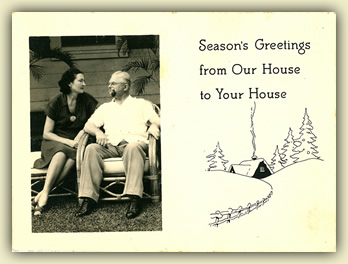 Sadly, Jessie was crippled by rheumatoid arthritis early in her life. My mother, her namesake, only knew her as an invalid. I designed this sunny lace shawl with the idea that something soft, bright and beautiful would be welcome to a person confined as Jessie was, and also with the notion of honoring her desire to dress up and continue her own traditions in an exotic new place. The sunny color is reminiscent of both Hawaiian afternoons and the old-fashioned yellow roses of the mainland. This shawl is big enough to tie in front and warm an aching set of shoulders, and fancy enough to make the plainest getup fit for a Sunday excursion. The lace motifs are traditional, but, in memory of Jessie, combined and executed in a somewhat adventurous way.
Sadly, Jessie was crippled by rheumatoid arthritis early in her life. My mother, her namesake, only knew her as an invalid. I designed this sunny lace shawl with the idea that something soft, bright and beautiful would be welcome to a person confined as Jessie was, and also with the notion of honoring her desire to dress up and continue her own traditions in an exotic new place. The sunny color is reminiscent of both Hawaiian afternoons and the old-fashioned yellow roses of the mainland. This shawl is big enough to tie in front and warm an aching set of shoulders, and fancy enough to make the plainest getup fit for a Sunday excursion. The lace motifs are traditional, but, in memory of Jessie, combined and executed in a somewhat adventurous way.

